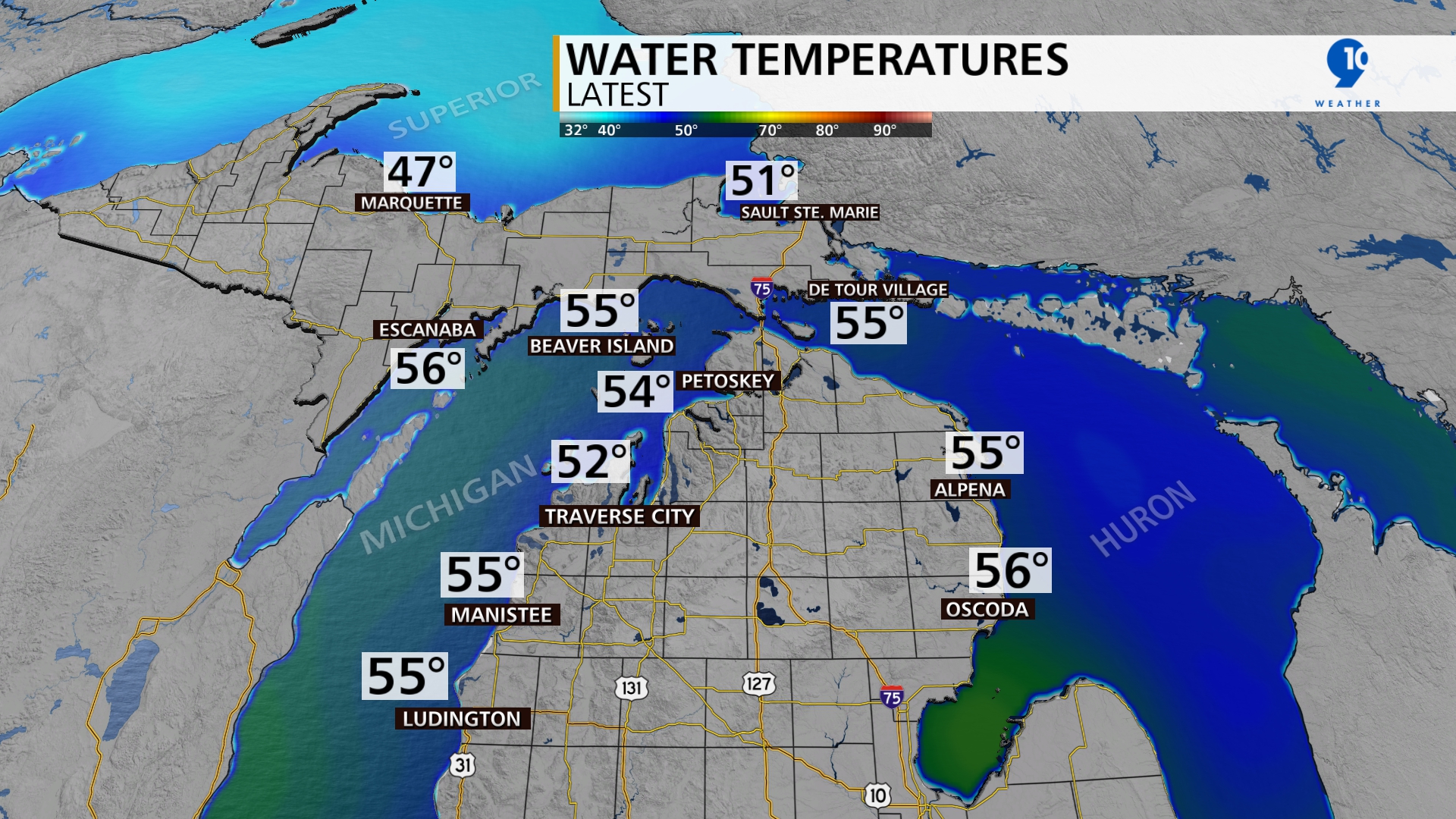The start of summer is around the corner. School is letting out, and the temperatures have already been warm, so you might be thinking of taking a swim or getting out on the boat. Getting out on the water is top priority for many during the summer months. But before you decide to make a splash, make sure to be aware of the water temperatures.
Water temperature plays an important role in the ability to enjoy your time on the water. Whether or not you plan on swimming or just boating, you need to know what could happen if you fall in the water.
This is important because hypothermia is often a concern during long-term exposure of water temperatures that are below 70°.
So what does that have to do with the Great Lakes during the summer? Even though temperatures on land are making you sweat and need a refresher, the water temperatures can be much colder.
Despite having temperatures in the 70s, 80s, and even 90s for several days this spring, the water is still cold. The water temperature is dependent on a few different factors.
The most important things that determine the water temperature are the number of consistent days that have warm air temperatures, and the depth or amount of water that is getting heated.
The shorelines are able to get the warmest because of their shallow nature. Since there is less water, it is much easier for the shallow portions to heat. For the same reason, that is why smaller inland lakes and other relatively shallow bodies of water can be warmer than the bigger lakes.
Another factor that can affect the day to day temperature of the surface water on the lakes is the wind causing waves. With high winds, colder water can “well up,” meaning colder water from out deep is mixed to the surface.
What to expect for Great Lakes water temperatures this summer
Data from buoys and satellites summarized by the National Oceanic and Atmospheric Administration (NOAA) report that much of Lake Erie’s water surface temperatures are in the mid-60s and pushing 70 at the west end, as of June 15.
Lake Huron’s shore near Alpena and Oscoda are in the low 60s. Lake Michigan along Ludington and Manistee are in the mid-50s, but warms up at the southern edge near Indiana and Illinois.
If you’re headed to the beach in the Upper Peninsula, you will feel water temperatures in the similar temperature range. Along the shores near Whitefish point, buoys have been reporting temperatures in the lower to mid-50s.
But don’t worry, there’s a lot of summer left, and the water will be much warmer by mid-late summer and even early fall, giving you plenty of time to enjoy the Great Lakes! By August and September, average temperatures for Lake Michigan and Huron will be in the upper 60s to low 70s.
Lake Erie and Ontario average the mid to upper 70s by late summer, because of their shallowness. Lake Superior, of course, comes in last with the peak temperatures in the mid-60s.
Here in Michigan we are lucky to have four of the five Great Lakes at easy access. Keep in mind though that even though the air may be warm, the water can be the opposite.
Make sure that you limit your exposure to water temperatures that are below 70° and keep a life jacket or other life-saving flotation device nearby in case you find yourself in the cold water unexpectedly.
Stay up to date on weather and water conditions with our Marine Forecast.
© 2023 - 910 Media Group



